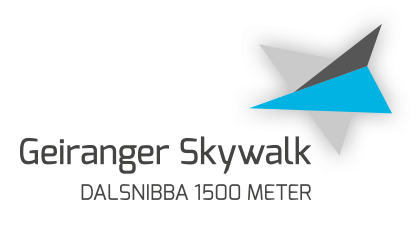
HISTORY
The history of Nibbevegen, as the road up to Dalsnibba is popularly known, is one of the most ambitious road-building projects ever seen in Norway.
Today the road is considered one of the foremost symbols of tourism in Geiranger, with more than 200,000 people making the trip to Nibbevegen and Dalsnibba every year. What they are able to experience there is the result of outstanding entrepreneurship, irrepressible drive and a determination to create a unique experience for everyone visiting the area.
1857 How it all started
The idea of a road to the top of Dalsnibba was mooted as early as 1857, when civil engineer Hans Hagerup Krag headed up the work to stake out a road over the Geiranger mountains. He had studied construction of high-mountain roads in Switzerland and knew how important these roads were for the tourist industry.
An increase in tourism in the early 20th century called for an organised approach in order to keep pace with developments and promote the transport business in Geiranger. This led to the formation of Geiranger Skysslag in 1907 as an interest organisation for the transport business.
As long as the horse and carriage dominated excursion transport from the tourist ships, a trip to Dalsnibba would remain too long and too difficult. But when motorised vehicles took over at the end of the 1920s, Krag’s idea was given a new lease of life. The distance and gradient were no longer a problem, tourist numbers were increasing, optimism about the future was high, and Geiranger Skysslag was financially sound.
1937 Construction work
A road up to the Dalsnibba viewpoint was built a full 17 years before the area had year-round roads. Construction work on the Nibbevegen road started in June 1937. Many in the 50-strong workforce had worked on the Trollstigen road, which had opened the previous year.
1939 The war brings tourism to a halt
Tourist traffic on Nibbevegen started in a small way in 1939 but the political storm clouds were gathering and tourism was halted for the duration of the Second World War. Times were tough for a small transport company that had taken on huge debt. But in the summer of 1946, the tourists returned.
1948 Official opening
Although the Nibbevegen road had been completed in the autumn of 1938, it was still not officially open to traffic. It was time to remedy that situation. On 18 July 1948, Nibbevegen was officially opened by Nils Langhelle, the Norwegian Minister of Transport. The event tied in with the Stella Polaris being the first tourist ship to visit the Geirangerfjord since the end of the war.
Nibbevegen was now officially open for business, and the long years of complex planning and construction were over. The extraordinary idea of a road to Dalsnibba had become reality. Irrepressible optimism and drive had enabled a small company to achieve the incredible: They had won through with their plans, procured money to carry out the project, kept going through five long and arduous years of war, and were now the owners of a road with few equals anywhere in the world. Destination Geiranger had gained a major new attraction.
2004 Service building
A new service building containing a shop and toilets was completed on the summit in 2004. Its distinctive architecture reflects the surrounding high-mountain area.

2013 Increased traffic and upgrades
The volume of traffic has increased significantly since the road was finished, and in recent years Nibbevegen has been upgraded to meet more stringent standards. Most of the 5 km stretch now has two lanes, and the most exposed sections have been protected with safety barriers. The hairpin bends have been widened so that even the largest buses can now drive up to Dalsnibba without a problem. The final section of the Nibbevegen road was asphalted in the summer of 2013.
2016 Geiranger Skywalk
In 2016, a new platform was built as an extension of the existing plateau viewpoint, allowing visitors an even more spectacular way to experience Dalsnibba and the surrounding scenery. The new platform was named Geiranger Skywalk.

2016 Eco-Lighthouse
Geiranger Skysslag AS and Dalsnibba have recently been awarded Eco-Lighthouse accreditation. This involves taking a systematic approach to environmental measures on a day-to-day basis. Eco-Lighthouse enterprises must meet industry-specific requirements and implement measures to establish more environmentally friendly operations and a good working environment.

2022 Geiranger Skyhouse
The original building from 2004 was, with time, no longer large enough. We therefore started work on extending it in 2019, and Geiranger Skyhouse was completed in 2022. We extended the building from around 75 square metres to a total 500 square metres. This allowed us to create a bigger shop, a new café, a function room and more toilets. The building’s architecture is unique, and a beautiful reflection of the area surrounding the Geirangerfjord.





